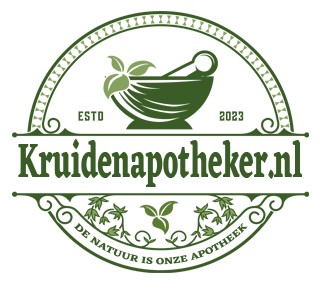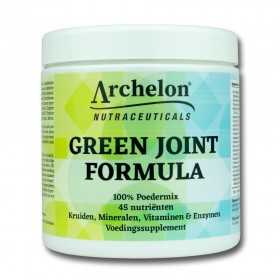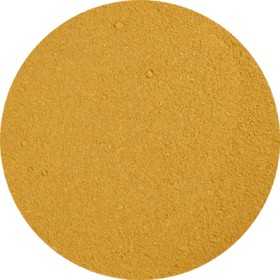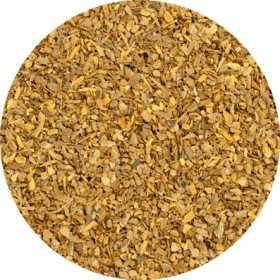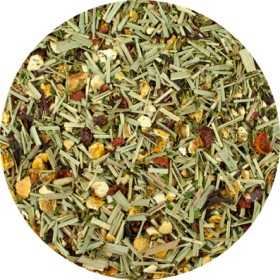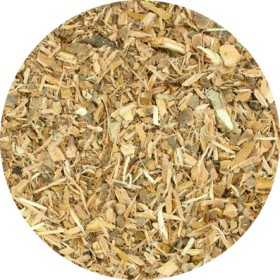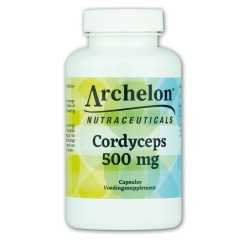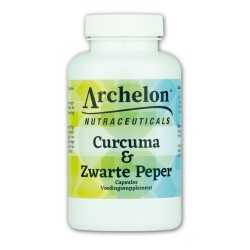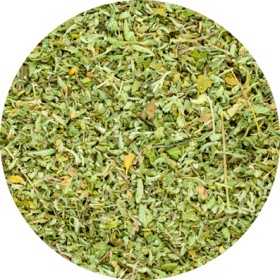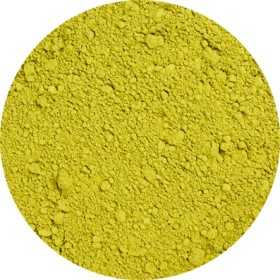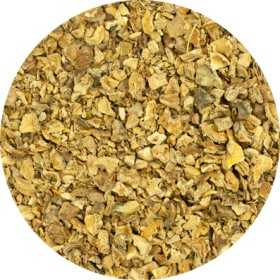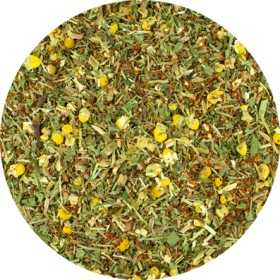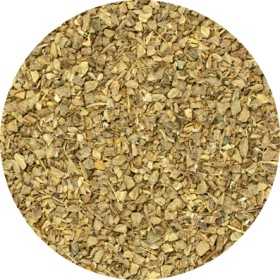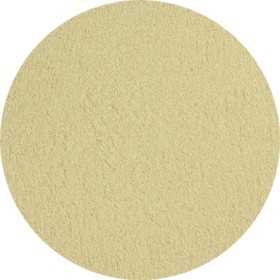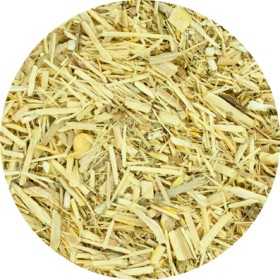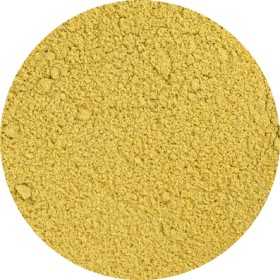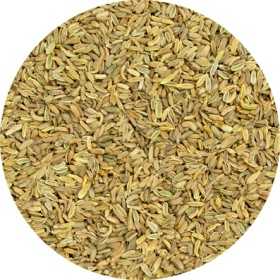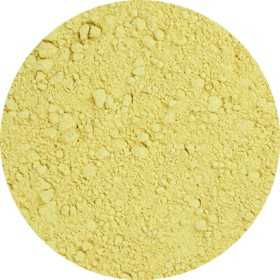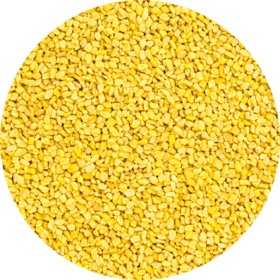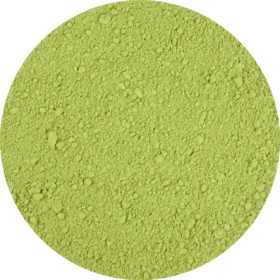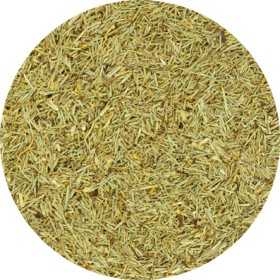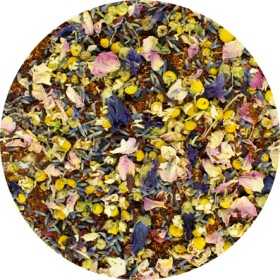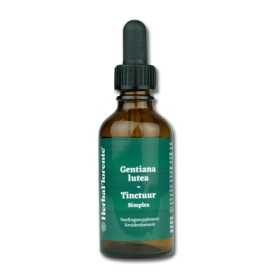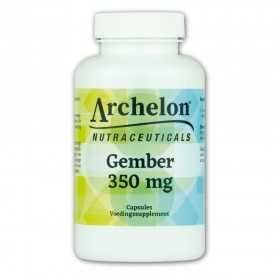Menstruation
There are 153 products.
Cinnamon - Cinnamomi ceylon
Cinnamon (Cinnamomum) has been known for centuries for its many uses. It is extracted from the bark of the Cinnamomum cassia tree, where part of the bark is carefully cut loose and the rough outer surface is removed with a knife. The well-known cinnamon sticks or cinnamon powder are made from the inside of the bark. Cinnamon has been valued for centuries, both in culinary and herbalist circles.
This herb has been used in Asian cultures for centuries for its versatile uses. The wonderful aroma of cinnamon is determined by volatile oils, of which cinnamaldehyde is the most common. In addition, cinnamon also contains substances such as eugenol, coumarins, tannins, OPCs and terpenes.
This herb has been used in Asian cultures for centuries for its versatile uses. The wonderful aroma of cinnamon is determined by volatile oils, of which cinnamaldehyde is the most common. In addition, cinnamon also contains substances such as eugenol, coumarins, tannins, OPCs and terpenes.
€2.95
From: €2.95
Cinnamon - Cinnamomi ceylon - Cut
Cinnamon (Cinnamomum) has been known for centuries for its many uses. It is extracted from the bark of the Cinnamomum verum tree, where part of the bark is carefully cut loose and the rough outer surface is removed with a knife. The well-known cinnamon sticks or cinnamon powder are made from the inside of the bark. Cinnamon has been valued for centuries, both in culinary and herbalist circles.
This herb has been used in Asian cultures for centuries for its versatile uses. The wonderful aroma of cinnamon is determined by volatile oils, of which cinnamaldehyde is the most common. In addition, cinnamon also contains substances such as eugenol, coumarins, tannins, OPCs and terpenes.
This herb has been used in Asian cultures for centuries for its versatile uses. The wonderful aroma of cinnamon is determined by volatile oils, of which cinnamaldehyde is the most common. In addition, cinnamon also contains substances such as eugenol, coumarins, tannins, OPCs and terpenes.
€3.00
From: €3.00
Citrus Blend Herbal Tea
Herbal tea composed of various herbs
Delicious for every moment
Delicious for every moment
€3.95
copy of Witch Hazel (Bark) - Hamamelis virginiana
The American witch hazel (Hamamelis virginiana) is a shrub belonging to the family Hamamelidaceae, native to North America from Nova Scotia to Minnesota, and from southern and central Florida to eastern Texas.
The shrub can reach a height of 6 to sometimes even 10 meters, with a bushy growth thanks to the many branches that arise just above the ground. The bark is light brown, smooth but somewhat flaky, and shows a reddish-purple color on the inside.
Blooming from September through October, the flowers of the American witch hazel display clusters of 4 stamens. They usually range from pale yellow to bright yellow, although orange or red hues also occur. The petals are ribbon-shaped and measure 10-20 mm in length.
The shrub can reach a height of 6 to sometimes even 10 meters, with a bushy growth thanks to the many branches that arise just above the ground. The bark is light brown, smooth but somewhat flaky, and shows a reddish-purple color on the inside.
Blooming from September through October, the flowers of the American witch hazel display clusters of 4 stamens. They usually range from pale yellow to bright yellow, although orange or red hues also occur. The petals are ribbon-shaped and measure 10-20 mm in length.
€5.20
From: €5.20
Cordyceps - 500 mg
Cordyceps originates in the Far East and is widely used in Chinese herbalism. Cordyceps sinensis, also known as the caterpillar fungus, is a mushroom with a wide range of active substances and is therefore used for various purposes.
In traditional Chinese herbalism, cordyceps is even called the 'emperor of the mushrooms'. This fungus lives as a parasite on caterpillars of a specific moth species. It infects the caterpillars with its spores, after which a club-shaped mushroom grows from the head of the mummified caterpillar. The name 'cordyceps' comes from the Latin 'cordy' (club) and 'ceps' (head), while 'sinensis' means 'Chinese'. In the Netherlands, this fungus is also known as 'caterpillar killer', 'caterpillar fungus' or 'Chinese caterpillar killer'.
In traditional Chinese herbalism, cordyceps is even called the 'emperor of the mushrooms'. This fungus lives as a parasite on caterpillars of a specific moth species. It infects the caterpillars with its spores, after which a club-shaped mushroom grows from the head of the mummified caterpillar. The name 'cordyceps' comes from the Latin 'cordy' (club) and 'ceps' (head), while 'sinensis' means 'Chinese'. In the Netherlands, this fungus is also known as 'caterpillar killer', 'caterpillar fungus' or 'Chinese caterpillar killer'.
€34.95
Curcuma - 500 mg
Curcuma (also known as turmeric) (Curcumae longae) is respected worldwide as one of the most valuable herbs. It originates in the tropical regions of India and Southeast Asia. The powder of the root is known for its popularity in Asian cuisine and is known in the Netherlands as turmeric, due to its role in coloring curry and mustard.
In addition to its culinary uses, turmeric also offers several health benefits. Curcuma has been used in India for centuries because of its effective effect on flexible joints and intestinal function. It is a powerful antioxidant that benefits the liver and musculoskeletal system, while also aiding digestion.
In addition to its culinary uses, turmeric also offers several health benefits. Curcuma has been used in India for centuries because of its effective effect on flexible joints and intestinal function. It is a powerful antioxidant that benefits the liver and musculoskeletal system, while also aiding digestion.
€19.95
Curcuma 480 mg & Black Pepper 20 mg
Curcuma (also known as turmeric) (Curcumae longae) is respected worldwide as one of the most valuable herbs. It originates in the tropical regions of India and Southeast Asia. The powder of the root is known for its popularity in Asian cuisine and is known in the Netherlands as turmeric, due to its role in coloring curry and mustard.
In addition to its culinary uses, turmeric also offers several health benefits. Curcuma has been used in India for centuries because of its effective effect on flexible joints and intestinal function.
In addition to its culinary uses, turmeric also offers several health benefits. Curcuma has been used in India for centuries because of its effective effect on flexible joints and intestinal function.
€21.95
Damiana - Damianae mex. (Turnera diffusa) - Cut
Damiana (Turnera diffusa) is a shrub native to southern Texas in the United States, as well as Central America, Mexico, South America and the Caribbean. It belongs to the Passifloraceae family and has been used by the Mayan Indians for centuries for its known effects on libido. Both men and women benefit from the libido-supporting properties of damiana, which is also known for its stress-reducing effect.
In Mexico, women often prepare tea from the fragrant leaves of the damiana shrub or smoke them to stimulate their feelings of pleasure. Damiana leaf contains several active substances, including beta-sitosterol, arbutin and alkaloids.
In Mexico, women often prepare tea from the fragrant leaves of the damiana shrub or smoke them to stimulate their feelings of pleasure. Damiana leaf contains several active substances, including beta-sitosterol, arbutin and alkaloids.
€4.60
From: €4.60
Damiana - Damianae mex. (Turnera diffusa) - Grounded
Damiana (Turnera diffusa) is a shrub native to southern Texas in the United States, as well as Central America, Mexico, South America and the Caribbean. It belongs to the Passifloraceae family and has been used by the Mayan Indians for centuries for its known effects on libido. Both men and women benefit from the libido-supporting properties of damiana, which is also known for its stress-reducing effect.
In Mexico, women often prepare tea from the fragrant leaves of the damiana shrub or smoke them to stimulate their feelings of pleasure. Damiana leaf contains several active substances, including beta-sitosterol, arbutin and alkaloids.
In Mexico, women often prepare tea from the fragrant leaves of the damiana shrub or smoke them to stimulate their feelings of pleasure. Damiana leaf contains several active substances, including beta-sitosterol, arbutin and alkaloids.
€4.40
From: €4.40
Devil's Claw - Harpagophytum procumbems
The devil's claw (Harpagophytum procumbens) gets its name from the claw-like spines that cover the fruits. The name is derived from the Greek word 'harpagos', meaning 'anchor', which refers to the shape of the plant. The plant grows mainly in the Kalahari Desert, which extends across parts of Namibia, Botswana and South Africa. A distant relative of the sesame plant, the devil's claw blooms with beautiful red to purple trumpet-shaped flowers. The medicinal properties of devil's claw are located underground, in the tubers and roots. The plant is known for its beneficial effect on digestion and promoting flexible joints.
€2.60
From: €2.60
Early Morning Herbal Tea
Herbal tea composed of various herbs
Nice for early morning
Nice for early morning
€3.95
Elecampane - Inula helenium
The Elecampane (Inula helenium) is a perennial plant that belongs to the composite family (Compositae or Asteraceae). This plant is naturally found in Western and Central Asia and has been known for its culinary and medicinal uses since ancient times.
The ancient Greeks called the plant helenion, which means "the radiant, the splendid." This name is related to hèlios, which means "sun". There are several myths surrounding the naming. The Romans adopted the Greek name and called the plant inula. When Linnaeus introduced the scientific Latin name Inula helenium in 1753, he combined the Roman genus name with the Greek specific name.
The ancient Greeks called the plant helenion, which means "the radiant, the splendid." This name is related to hèlios, which means "sun". There are several myths surrounding the naming. The Romans adopted the Greek name and called the plant inula. When Linnaeus introduced the scientific Latin name Inula helenium in 1753, he combined the Roman genus name with the Greek specific name.
€2.20
From: €2.20
Eleutherococcus (Siberian Ginseng) - 250 mg
Siberian ginseng (Eleutherococcus senticosus) has had a good reputation in both China and Russia for centuries as a supporter of the immune system. Siberian ginseng root extract is beneficial for memory and concentration.
The carrots are a rich source of beta-carotene, vitamins B1, B2, C and E, and they are high in eleutherosides. It is important not to confuse Siberian ginseng with its Korean variant (Panax ginseng) or the American one (Panax quinquefolius). Not only do the names differ, but also the properties.
The carrots are a rich source of beta-carotene, vitamins B1, B2, C and E, and they are high in eleutherosides. It is important not to confuse Siberian ginseng with its Korean variant (Panax ginseng) or the American one (Panax quinquefolius). Not only do the names differ, but also the properties.
€14.36
€17.95
Eleutherococcus (Siberian Ginseng) - Eleutherococcus
Siberian ginseng (Eleutherococcus senticosus) has had a good reputation in both China and Russia for centuries as a supporter of the immune system. Siberian ginseng root extract is beneficial for memory and concentration.
The carrots are a rich source of beta-carotene, vitamins B1, B2, C and E, and they are high in eleutherosides. It is important not to confuse Siberian ginseng with its Korean variant (Panax ginseng) or the American one (Panax quinquefolius). Not only do the names differ, but also the properties.
The carrots are a rich source of beta-carotene, vitamins B1, B2, C and E, and they are high in eleutherosides. It is important not to confuse Siberian ginseng with its Korean variant (Panax ginseng) or the American one (Panax quinquefolius). Not only do the names differ, but also the properties.
€2.80
From: €2.80
Eleutherococcus (Siberian Ginseng) - Eleutherococcus - Cut
Siberian ginseng (Eleutherococcus senticosus) has had a good reputation in both China and Russia for centuries as a supporter of the immune system. Siberian ginseng root extract is beneficial for memory and concentration.
The carrots are a rich source of beta-carotene, vitamins B1, B2, C and E, and they are high in eleutherosides. It is important not to confuse Siberian ginseng with its Korean variant (Panax ginseng) or the American one (Panax quinquefolius). Not only do the names differ, but also the properties.
The carrots are a rich source of beta-carotene, vitamins B1, B2, C and E, and they are high in eleutherosides. It is important not to confuse Siberian ginseng with its Korean variant (Panax ginseng) or the American one (Panax quinquefolius). Not only do the names differ, but also the properties.
€2.20
From: €2.20
Fennel - Foeniculum vulgare - Grounded
Fennel (Foeniculum vulgare) is a plant belonging to the lacecap family (Apiaceae). It has a distinctive flavor reminiscent of anise, and both the threadlike branches of the leaves and the seeds are used as a herb and spice.
Originally from Asia and the Mediterranean, fennel was brought to Europe via medieval trade routes. Fennel is widely grown, especially in Southern Europe, and is an important ingredient in salads and other dishes.
Chewing fennel seeds can suppress the feeling of hunger. In the past, believers who went to church sober sometimes chewed fennel seeds during the church service.
Originally from Asia and the Mediterranean, fennel was brought to Europe via medieval trade routes. Fennel is widely grown, especially in Southern Europe, and is an important ingredient in salads and other dishes.
Chewing fennel seeds can suppress the feeling of hunger. In the past, believers who went to church sober sometimes chewed fennel seeds during the church service.
€2.60
From: €2.60
Fennel - Foeniculum vulgare - Whole
Fennel (Foeniculum vulgare) is a plant belonging to the lacecap family (Apiaceae). It has a distinctive flavor reminiscent of anise, and both the threadlike branches of the leaves and the seeds are used as a herb and spice.Originally from Asia and the Mediterranean, fennel was brought to Europe via medieval trade routes. Fennel is widely grown, especially in Southern Europe, and is an important ingredient in salads and other dishes.Chewing fennel seeds can suppress the feeling of hunger. In the past, believers who went to church sober sometimes chewed fennel seeds during the church service.
€2.00
From: €2.00
Fenugreek - Foenugraeci graecum
Fenugreek (Trigonella foenum-graecum), also known as fenugreek, boxhorn trefoil or Greek hay, is known for its various health benefits. It can help stimulate appetite, support the immune system and promote fat metabolism.
This versatile plant is mainly used as a spice in Indian cuisine. The aromatic leaves of fenugreek are also used to mask the bitter taste of medicines. Originally from the Mediterranean region, fenugreek later gained popularity in Asia.
Fenugreek is rich in essential minerals such as iron and copper. In addition, it contains saponins and coumarins, where coumarins are known for their pleasant hay-like scent.
This versatile plant is mainly used as a spice in Indian cuisine. The aromatic leaves of fenugreek are also used to mask the bitter taste of medicines. Originally from the Mediterranean region, fenugreek later gained popularity in Asia.
Fenugreek is rich in essential minerals such as iron and copper. In addition, it contains saponins and coumarins, where coumarins are known for their pleasant hay-like scent.
€2.00
From: €2.00
Fenugreek - Foenugraeci graecum - Whole
Fenugreek (Trigonella foenum-graecum), also known as fenugreek, boxhorn trefoil or Greek hay, is known for its various health benefits. It can help stimulate appetite, support the immune system and promote fat metabolism.
This versatile plant is mainly used as a spice in Indian cuisine. The aromatic leaves of fenugreek are also used to mask the bitter taste of medicines. Originally from the Mediterranean region, fenugreek later gained popularity in Asia.
Fenugreek is rich in essential minerals such as iron and copper. In addition, it contains saponins and coumarins, where coumarins are known for their pleasant hay-like scent.
This versatile plant is mainly used as a spice in Indian cuisine. The aromatic leaves of fenugreek are also used to mask the bitter taste of medicines. Originally from the Mediterranean region, fenugreek later gained popularity in Asia.
Fenugreek is rich in essential minerals such as iron and copper. In addition, it contains saponins and coumarins, where coumarins are known for their pleasant hay-like scent.
€1.95
From: €1.95
Field Horsetail - Equisetum arvense
Horsetail (Equisetum arvense), also known as horsetail because of its appearance, belongs to the horsetail family. It is known for its supportive properties for the skin, hair and nails, and it provides benefits for the liver and blood vessels. Horsetail extract has a natural calming effect and promotes a healthy moisture balance.
This plant thrives in different environments, such as meadows, along roads, on waste land and on slopes. Horsetail is one of the oldest plant species on earth, having existed for 390 million years. Thanks to its deep roots, horsetail can extract minerals from the depths of the earth. That is why horsetail is packed with valuable substances, including minerals, fiber and silicon.
This plant thrives in different environments, such as meadows, along roads, on waste land and on slopes. Horsetail is one of the oldest plant species on earth, having existed for 390 million years. Thanks to its deep roots, horsetail can extract minerals from the depths of the earth. That is why horsetail is packed with valuable substances, including minerals, fiber and silicon.
€4.75
From: €4.75
Field Horsetail - Equisetum arvense - Cut
Horsetail (Equisetum arvense), also known as horsetail because of its appearance, belongs to the horsetail family. It is known for its supportive properties for the skin, hair and nails, and it provides benefits for the liver and blood vessels. Horsetail extract has a natural calming effect and promotes a healthy moisture balance.
This plant thrives in different environments, such as meadows, along roads, on waste land and on slopes. Horsetail is one of the oldest plant species on earth, having existed for 390 million years. Thanks to its deep roots, horsetail can extract minerals from the depths of the earth. That is why horsetail is packed with valuable substances, including minerals, fiber and silicon.
This plant thrives in different environments, such as meadows, along roads, on waste land and on slopes. Horsetail is one of the oldest plant species on earth, having existed for 390 million years. Thanks to its deep roots, horsetail can extract minerals from the depths of the earth. That is why horsetail is packed with valuable substances, including minerals, fiber and silicon.
€3.95
From: €3.95
Flowers Herbal Tea
Herbal tea composed of various herbs
Nice for a floral moment
Nice for a floral moment
€3.95
Gentian Large Yellow Tincture - Gentiana lutea Tincture
Single herbal tincture made with dried root of Gentiana lutea (Gentian Large Yellow).
The large yellow gentian, also known as Gentiana lutea, is a perennial plant belonging to the gentian family (Gentianaceae). This plant naturally occurs in European mountains, mainly at altitudes up to 2200 meters.
In ancient times, yellow gentian was used as a medicine against various ailments, including fever, gout, hypochondria, malaria, intestinal parasites and even alcoholism. Today the plant is mainly used for its bitter properties, such as stimulating the appetite, and as an ingredient in liqueurs, such as gentian liqueur.
The large yellow gentian, also known as Gentiana lutea, is a perennial plant belonging to the gentian family (Gentianaceae). This plant naturally occurs in European mountains, mainly at altitudes up to 2200 meters.
In ancient times, yellow gentian was used as a medicine against various ailments, including fever, gout, hypochondria, malaria, intestinal parasites and even alcoholism. Today the plant is mainly used for its bitter properties, such as stimulating the appetite, and as an ingredient in liqueurs, such as gentian liqueur.
€11.95
Ginger - 350 mg
Ginger comes from the root of the ginger plant (Zingiber officinale) and is used as a spice in many countries because of its strong flavor. It contains various bioactive substances, including gingerol, shogaol and zingiberene. Ginger supports the immune system, promotes healthy digestion and has a beneficial effect on the heart and blood vessels. Additionally, ginger can promote well-being during vehicle travel.
€19.95
